#Women Film Pioneers Project
Explore tagged Tumblr posts
Text
The Silent London Poll of 2023: vote for your winners now
#Anna May Wong#BFI#Dorothy Arzner#film#Giornate del Cinema Muto#Il Cinema Ritrovato#Kennington Bioscope#London Film Festival#Masters of Cinema#movies#Pablo Berger#poll#Pordenone Silent Film Festival#review#Sessue Hayakawa#Sherlock Holmes#silent film#William Gillette#Women FIlm Pioneers Project
1 note
·
View note
Text
BLACK PUNK CRASH COURSE!!!
BLACK PUNK OGS
Death
X-Ray Spex
Bad Brains
Pure Hell
Fishbone
MODERN BLACK PUNK ARTISTS
Ho99o9
The Muslims
Pleasure Venom
Fuck U Pay Us
Big Joanie
Nova Twins
MORE NAMES TO KNOW
Tina Bell: frontwoman of the band Bam Bam, often called the Godmother of grunge because of its influence. Racism within the scene has led to her influence being pretty extensively erased but her bandmate and lifelong friend Scotty Buttocks has been working hard to counteract that by doing press and preserving their music here. Kurt fucking Cobain was their roadie
Betty Davis: 70s funk rock legend who just recently passed away. Incredibly unique performer that was way ahead of her time. Not to be confused with Bette Davis.
Sistah Grrrl Riots: A black punk collective put together in response to alienation and racism in the 90s punk and riot grrrl scenes. Organized by legends Tamar-Kali Brown, Honeychild Coleman, Maya Glick, and Simi Stone. You can read more about sistah grrrl in this article.
Ronnie Spector: Frontwoman of the Ronettes and rock n roll pioneer. Black girl groups were a huge influence on the sound of Rock n Roll as we know it from The Beatles to Led Zepplin to the Rolling Stones. She recently passed but her autobiography came out last year and it's worth the read.
READ A FUCKING BOOK
Black Diamond Queens: African American Women and Rock and Roll by Maureen Mahon
Rip It Up: The Black Experience in Rock N Roll by Kandia Crazy Horse (Anthology)
Shotgun Seamstress Zine Anthology by Osa Atoe
BONUS LINKS
POC Zine Project @poczineproject
Maya Glick's Storm fan film RAIN
Black Women in Rock Archive
IMDb for the documentary Afro-Punk (2003) currently not available for streaming in the US
#black punk#afropunk#riot grrrl#spider punk#hobie brown#that hobie playlist post made me see red so here u go#I literally just wrote a big ass paper on this shit so I had my sources ready 2 go#it speaks
8K notes
·
View notes
Text


Propaganda
Marguerite De La Motte (The Mark of Zorro, The Three Musketeers)—She has the most soulful eyes of the silent film era. LOOK AT HER. I fell in love with her watching The Mark of Zorro, along with every man in that film, and for good reason.
Tsuru Aoki (The Dragon Painter, The Wrath of the Gods)—Tsuru Aoki was one of the earliest Japanese professional film actresses in the U.S. and may be the first Asian actress to receive lead billing in American motion pictures. After she and fellow fledgling actor Sessue Hayakawa co-starred in a short film together in 1914 they began a relationship and married the same year, going on to make more than twenty movies together in the 1910s and '20s. One of the best remembered is The Dragon Painter from 1919.
This is round 1 of the tournament. All other polls in this bracket can be found here. Please reblog with further support of your beloved hot sexy vintage woman.
[additional propaganda submitted under the cut.]
Marguerite De La Motte propaganda:


Tsuru Aoki propaganda:
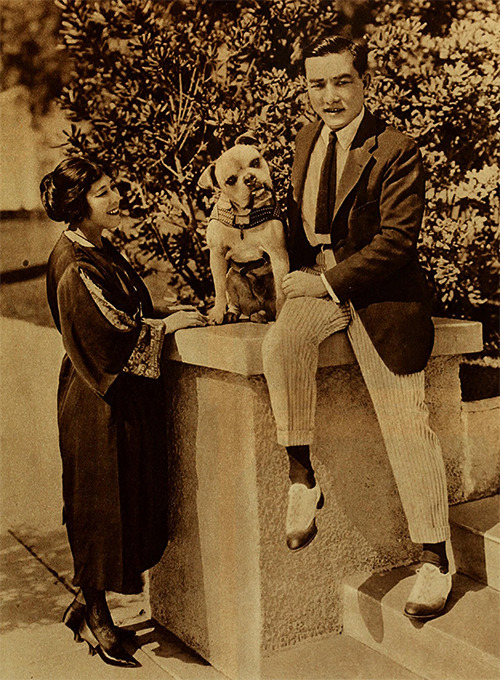


short clips of The Dragon Painter:
116 notes
·
View notes
Text
Film pioneer Alice Guy-Blaché for #WomensHistoryMonth From 1896 to 1906 she was probably the only woman film director in the world and directed and produced or supervised almost six hundred silent films. (Women Film Pioneers Project)

24 notes
·
View notes
Text
Human Rights Campaign Announces Eight New Members to its Boards of Directors
The Human Rights Campaign announced the 2024 members of the HRC and HRC Foundation Boards of Directors, which is comprised of diverse and innovative leaders across industries and in the LGBTQ+ community.
…
Sophia Bush, She/Her/Hers, Los Angeles
Sophia Bush is an actress, activist, producer, and entrepreneur. She has starred in television and film projects such as One Tree Hill, John Tucker Must Die, Chicago PD, Incredibles 2 and Good Sam.
Most recently, Bush wrapped production on Bryan Greenberg’s directorial debut, Junction and in London’s West End ‘2:22 – A Ghost Story’ play. She currently hosts her podcast, “Work in Progress with Sophia Bush” and co-hosts the iHeartRadio podcast “Drama Queens” alongside Hilarie Burton Morgan and Bethany Joy Lenz. Beyond entertainment, she's a dedicated activist and philanthropist who passionately supports projects empowering girls and women. Alongside her business partner Nia Linder Batts, Bush is a General Partner and investor in Union Heritage Ventures, a majority African American and women-owned capital firm. She also co-founded and sits on the board of I am a voter® and serves as a Strategic Advisor for First Women’s Bank with Billie Jean King.
…
Ashlyn Harris, She/Her/Hers, New York City
Ashlyn Harris, a former goalkeeper for the USWNT, Orlando Pride, and Gotham City FC in the NWSL, is a celebrated 2x World Cup Champion and Olympian. After retiring from the game, she served as the Global Creative Director of Gotham City FC. Beyond her athletic and creative achievements, Harris has established herself as a pioneer in advocating for social justice, particularly within the LGBTQ+ community, and in challenging stigmas around mental health. Her leadership and instrumental role as one of the plaintiffs in the groundbreaking case suing US Soccer for equal pay for women demonstrates her courage and unwavering dedication to fostering fairness and driving meaningful societal change. She now serves on the board of the Women's Sports Foundation, led by Billie Jean King, and passionately advocates for Title IX and closing the gender gap in women's sports.
In addition to growing Gotham FC to a 5x valuation as their creative director, she now works as a creative consultant and producer, collaborating with brands like Hello Sunshine and ALLY Bank. Her business acumen and passion for advocacy continue to guide her, positioning her as both a leader and a catalyst for progress. In her personal life, Harris finds joy and fulfillment in her family. She welcomed her daughter Sloane, in February 2021 and her son Ocean, in July 2022.
11 notes
·
View notes
Text
Christopher Nolan’s highly-anticipated movie “Oppenheimer,” set for release July 21, 2023, depicts J. Robert Oppenheimer and his role in the development of the atomic bomb. But while the Manhattan Project wouldn’t have been possible without the work of many accomplished female scientists, the only women seen in the movie’s trailer are either hanging laundry, crying or cheering the men on.The only women featured in the official trailer for Christopher Nolan’s ‘Oppenheimer’ are crying, hanging laundry or supporting the men.
As a physics professor who studies ways to support women in STEM – science, technology, engineering and math – fields and a film studies professor who worked as a screenwriter in Hollywood, we believe the trailer’s depiction of women reinforces stereotypes about who can succeed in science. It also represents a larger trend of women’s contributions in science going unrecognized in modern media.
Lise Meitner: A pioneering role model in physics
The Manhattan Project would not have been possible without the work of physicist Lise Meitner, who discovered nuclear fission. Meitner used Einstein’s E=MC² to calculate how much energy would be released by splitting uranium atoms, and it was that development that would prompt Einstein to sign a letter urging President Franklin Roosevelt to begin the United States’ atomic research program.
Einstein called Meitner the “Madame Curie of Germany” and was one of a pantheon of physicists, from Max Planck to Niels Bohr, who nominated Meitner for a Nobel Prize 48 times during her lifetime.
Meitner never won. Instead, the prize for fission went to Otto Hahn, her male lab partner of 30 years in Berlin. Hahn received the news of his nomination under house arrest in England, where he and other German scientists were being held to determine how far the Third Reich had advanced with its atomic program.
Of Jewish descent, Meitner had been forced to flee the Nazis in 1938 and refused to use this scientific discovery to develop a bomb. Rather, she spent the rest of her life working to promote nuclear disarmament and advocating for the responsible use of nuclear energy.
Meitner was not the only woman who made a significant contribution during this time. But the lack of physics role models like Meitner in popular media leads to real-life consequences. Meitner doesn’t appear as a character in the film, as she was not part of the Manhattan Project, but we hope the script alludes to her groundbreaking work.
A lack of representation
Only around 20% of the undergraduate majors and Ph.D. students in physics are women. The societal stereotypes and biases, expectation of brilliance, lack of role models and chilly culture of physics discourage many talented students from historically marginalized backgrounds, like women, from pursuing physics and related disciplines.
Societal stereotypes and biases influence students even before they enter the classroom. One common stereotype is the idea that genius and brilliance are important factors to succeed in physics. However, genius is often associated with boys, and girls from a young age tend to shy away from fields associated with innate brilliance.
Studies have found that by the age of 6, girls are less likely than boys to believe they are “really, really smart.” As these students get older, often the norms in science classes and curricula tend not to represent the interests and values of girls. All of these stereotypes and factors can influence women’s perception of their ability to do physics.
Research shows that at the end of a yearlong college physics course sequence, women with an “A” have the same physics self-efficacy as men with a “C”. A person’s physics self-efficacy is their belief about how good they are at solving physics problems – and one’s self-efficacy can shape their career trajectory.
Women drop out of college science and engineering majors with significantly higher grade-point averages than men who drop out. In some cases, women who drop out have the same GPA as men who complete those majors. Compared to men, women in physics courses feel significantly less recognized for their accomplishments. Recognition from others as a person who can excel in physics is the strongest predictor of a student’s physics identity, or whether they see themselves as someone who can excel in physics.
More frequent media recognition of female scientists, such as Meitner, could vicariously influence young women, who may see them as role models. This recognition alone can boost young women’s physics self-efficacy and identity.
When Meitner started her career at the beginning of the 20th century, male physicists made excuses about why women had no place in a lab – their long hair might catch fire on Bunsen burners, for instance. We like to believe we have made progress in the past century, but the underrepresentation of women in physics is still concerning.
Diversity as an asset to science
If diverse groups of scientists are involved in brainstorming challenging problems, not only can they devise better, future-oriented solutions, but those solutions will also benefit a wider range of people.
Individuals’ lived experiences affect their perspectives – for example, over two centuries ago, mathematician Ada Lovelace imagined applications far beyond what the original inventors of the computer intended. Similarly, women today are more likely to focus on applications of quantum computers that will benefit their communities. Additionally, physicists from Global South countries are more likely to develop improved stoves, solar cells, water purification systems or solar-powered lamps. The perspectives that diverse groups bring to science problems can lead to new innovations.
Our intention is not to disparage the “Oppenheimer” movie, but to point out that by not centering media attention on diverse voices – including those of women in physics like Meitner – filmmakers perpetuate the status quo and stereotypes about who belongs in physics. Additionally, young women continue to be deprived of exposure to role models who could inspire their academic and professional journeys'
74 notes
·
View notes
Photo


Katherine Johnson (née Coleman; August 26, 1918 – February 24, 2020) was an American mathematician whose calculations of orbital mechanics as a NASA employee were critical to the success of the first and subsequent U.S. crewed spaceflights. During her 33-year career at NASA and its predecessor, she earned a reputation for mastering complex manual calculations and helped pioneer the use of computers to perform the tasks. The space agency noted her "historical role as one of the first African-American women to work as a NASA scientist".
Johnson's work included calculating trajectories, launch windows, and emergency return paths for Project Mercury spaceflights, including those for astronauts Alan Shepard, the first American in space, and John Glenn, the first American in orbit, and rendezvous paths for the Apollo Lunar Module and command module on flights to the Moon. Her calculations were also essential to the beginning of the Space Shuttle program, and she worked on plans for a mission to Mars. She was known as a "human computer" for her tremendous mathematical capability and ability to work with space trajectories with such little technology and recognition at the time.
In 2015, President Barack Obama awarded Johnson the Presidential Medal of Freedom. In 2016, she was presented with the Silver Snoopy Award by NASA astronaut Leland D. Melvin and a NASA Group Achievement Award. She was portrayed by Taraji P. Henson as a lead character in the 2016 film Hidden Figures. In 2019, Johnson was awarded the Congressional Gold Medal by the United States Congress.[3] In 2021, she was inducted posthumously into the National Women's Hall of Fame
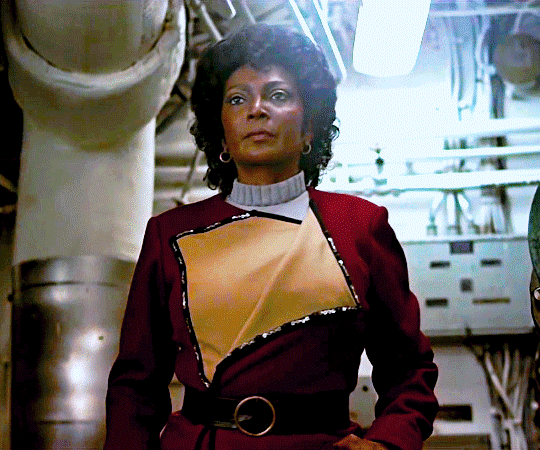

145 notes
·
View notes
Text


day 21/100 days of productivity
got up at 6.30am
spent some alone time drinking tea, journaling, planning the upcoming month
rearranged by bookshelfs
did a little photoshoot for a side project
cleaned my room
did the dishes
3 h study work (online studies) in the afternoon (unit 1 cw task 11, 12, 13, 14)
researching/exploring the women film pioneer project
reading poetry and having a cup of tea in the late afternoon ☕️
plan for the rest of the day:
evening study session (maybe even finish unit 1)
stretching while reading a text for film studies class
got a terrible migraine so that I had to lie down for the rest of the day and couldn’t do another study session … sucks.
xx
#100 days of productivity#booklover#books & libraries#books and writing#studyblr#book blog#student life#study blog#studygram#bookblr#student#french#french aesthetic#classic#soft moodboard#soft girl#softcore#soft aesthetic#comfy#pastel#light pink#beige#parisienstyle#parisian vibe#parisian chic#parisienne#parisian style
9 notes
·
View notes
Text

Celebrating Zora Neale Hurston!
"Ethnographic in nature, the films reflect a focus of folklorists of that time period who believed that “…cultural performance and beliefs must be expeditiously collected and documented because they would soon be gone forever” (Gibson, 205)." Learn more about Hurston's filmmaking at Women Film Pioneers Project.


Commandment Keeper Church (1940)
youtube
Watch Zora Neale Hurston: Claiming a Space (2023) directed by Tracy Heather Straing on PBS.
Explore Hurston's filmography on MUBI:

69 notes
·
View notes
Text
(Mostly) Lost, but Not Forgotten: A Thief in Paradise (1925)
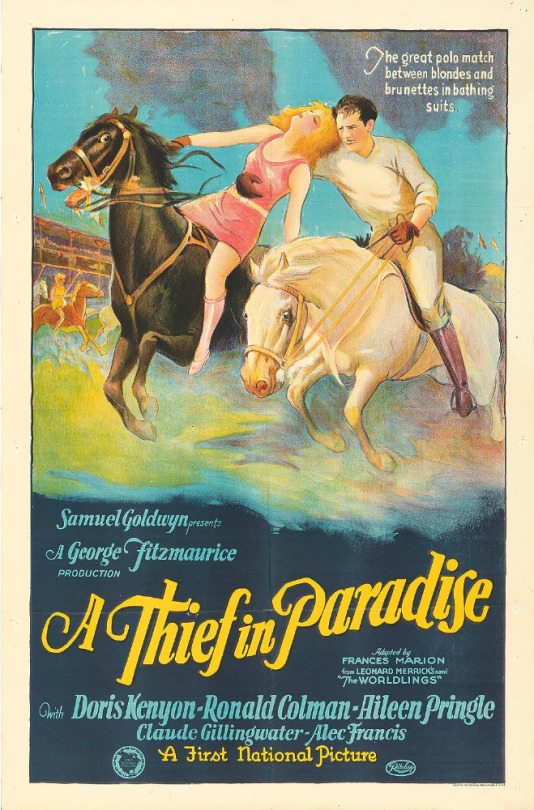


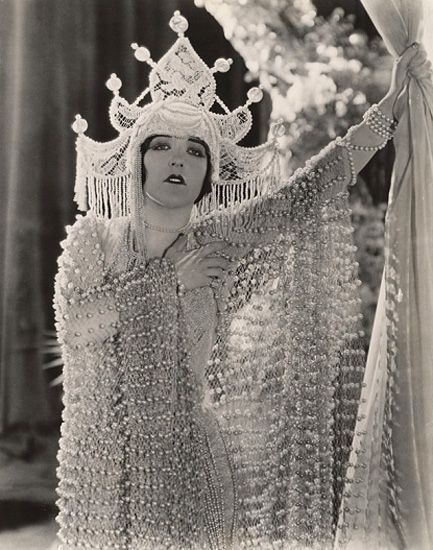
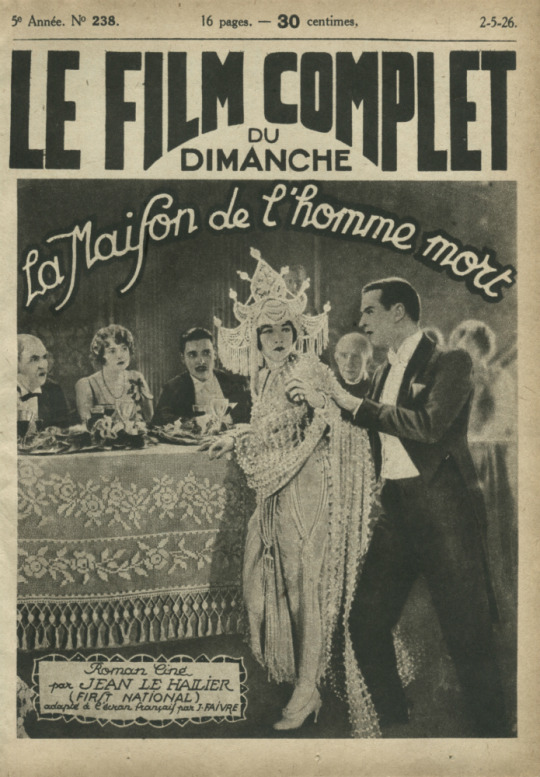
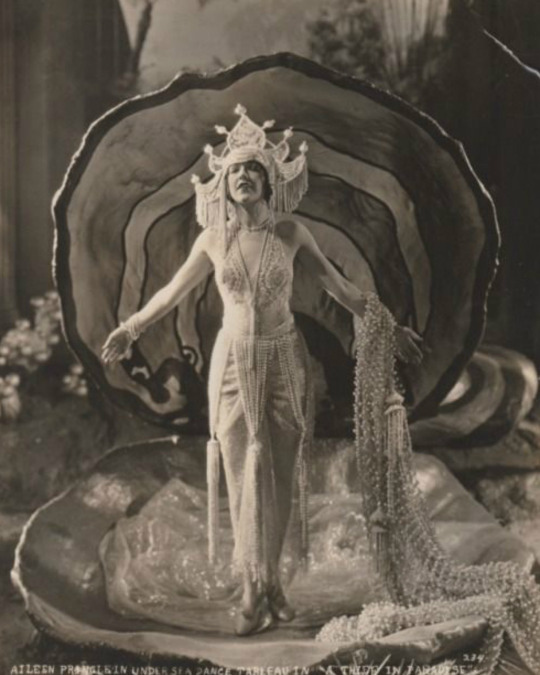
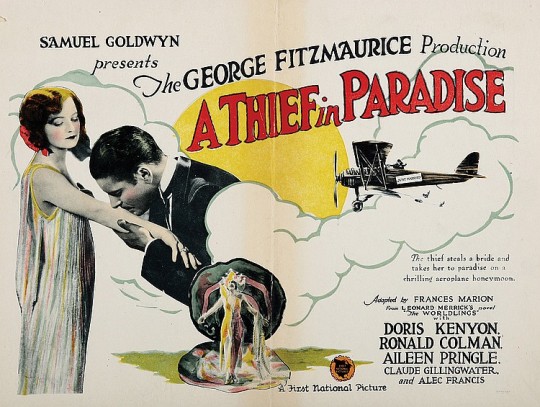
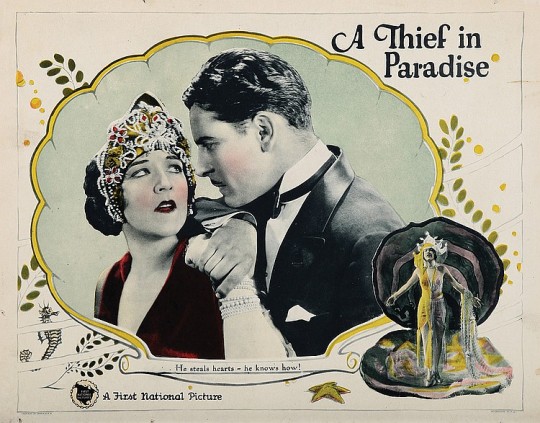
Direction: George Fitzmaurice
Scenario: Frances Marion (learn more at the Women Film Pioneers Project)
Original Novel: Leonard Merrick’s “The Worldlings”
Camera: Arthur C. Miller
Set Design: Anton Grote
Studio: Goldwyn (production) & First National (distribution)
Performers: Doris Kenyon, Ronald Colman, Aileen Pringle, Claude Gillingwater, Alec B. Francis, John Patrick, Charles Youree, Etta Lee, Lon Poff
Polo Players: Nita Cavalier, Virginia Jolly, Martha Wing
Premiere: 25 January 1925 at the Strand, New York
Status: presumed lost, save for a trailer
Length: 7, 231-7,251 feet, or roughly 71 minutes. (8 reels)
Synopsis (synthesized from magazine summaries of the plot):
While pearl diving off the coast of a remote South Seas island, Philip Jardine (Youree) and Maurice Blake (Colman) have a vicious fight underwater over the possession of a valuable pearl. In the struggle, Jardine is cut and subsequently attacked by a shark and killed. Blake manages to escape to shore.

Aileen Pringle & Ronald Colman in A Thief in Paradise from Exhibitors Trade Review, 10 January 1925
Rosa Carmino (Pringle), Jardine’s common-law wife, reveals to Blake that Jardine came from a wealthy family back in the United States. A letter and money has arrived to carry Jardine back home to San Francisco to reunite with his long-estranged father (Gillingwater). Carmino convinces Blake to assume Jardine’s identity. Blake Has doubts, but the promise of a fresh start leads him to accept the proposition. Blake and Carmino travel together to California.
The deception is successful and Blake begins running in high society where he meets Helen Saville (Kenyon). Saville is the daughter of a Bishop (Francis), who happens to be the elder Jardine’s best friend. The old men are keen on the relationship, but Blake is held back by guilt over his deception. Additionally, as part of the identity theft scheme, Blake is bankrolling Carmino’s luxurious bohemian lifestyle.
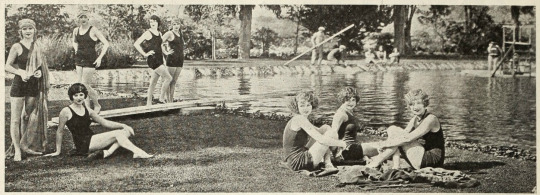
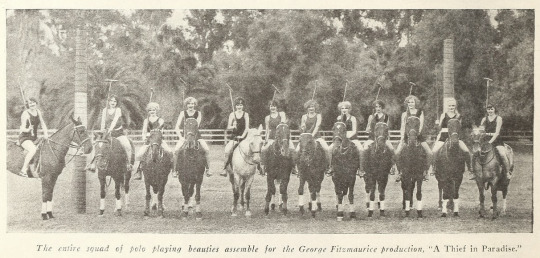
Top: Bathing Beauties in A Thief in Paradise from Exhibitors Trade Review, 10 January 1925 | Bottom: Bathing Beauties in A Thief in Paradise from Screenland, February 1925
On the grounds of the Jardine estate, a bevy of bathing beauties decide to put on a polo match—blondes vs. brunettes. Saville is also spending the day riding, and her horse gets startled and bolts headlong toward a cliff. Blake springs into action and manages to save Saville at the last moment. Overwhelmed by the situation, Blake confesses his love for Saville. The exchange is overheard by Jardine and the Bishop.

Alec Francis, Claude Gillingwater, Doris Kenyon, & Ronald Colman in A Thief in Paradise from Exhibitors Trade Review, 10 January 1925
Jardine throws an extravagant party where he announces the youngsters’ engagement. Unfortunately, Carmino is one of the entertainers hired for the party. Carmino performs a dramatic under-the-sea dance number that creatively retells the story of Blake and Jardine’s underwater battle. As it turns out, Carmino is in love with Blake and she is unpleasantly surprised with the engagement announcement. Carmino threatens to expose Blake. Blake attempts to pay her off.

Under-the-water dance sequence in A Thief in Paradise from Exhibitors Trade Review, 10 January 1925
Blake and Saville are married and head off via airplane to Del Monte Beach for their honeymoon. Blake is overwhelmed with guilt and is working up the courage to make a full confession to Saville. Unbeknownst to Blake, Carmino has followed the couple. Carmino goes straight to Saville, but rather than revealing the deception, she claims that she is Blake’s mistress and that he has been keeping her. Carmino uses the pay-off check Blake gave her as evidence. Saville is heartbroken and immediately returns home.
Blake follows Saville back to San Francisco, where he confesses to both the elder Jardine and Saville. The old man’s heart is also broken as he has accepted Blake as his son and loved him as such. Blake is despondent and shoots himself.
Miraculously, Blake survives and Saville has chosen to stand by him and nurse him back to health. Jardine has accepted Blake as his true son, forgiving the deception. Carmino returns home.
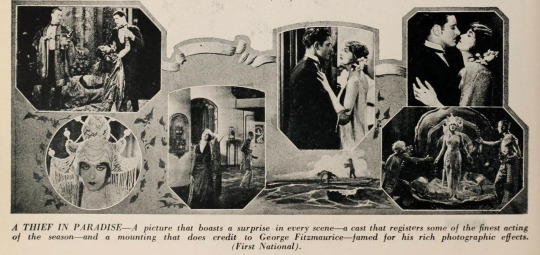
Miscellaneous stills from A Thief in Paradise from Motion Picture News, 26 December 1925 [L to R: John Patrick, Aileen Pringle, Ronald Colman, Pringle, Pringle, Etta Lee, Colman, Doris Kenyon, Kenyon, Colman, Pringle]
Additional sequences featured in the film (but I’m not sure where they fit in the continuity):
Another dance sequence by Pringle as Carmino staged in her studio apartment
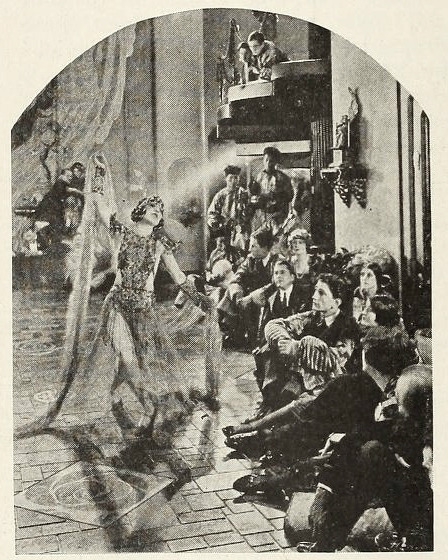
Aileen Pringle in A Thief in Paradise from Exhibitors Trade Review, 10 January 1925
The Bishop Saville and Jardine play chess and the Bishops cheats, is caught by Jardine
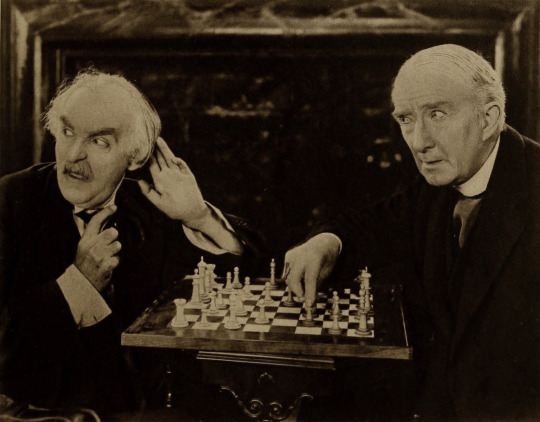
Claude Gillingwater & Alec Francis in A Thief in Paradise from Motion Picture Magazine, March 1925
Four old men are left to care for a baby and are at a loss
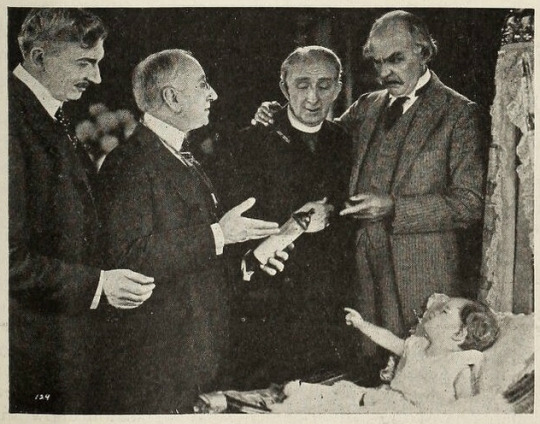
Four old men (Alec B. Francis & Claude Gillingwater to right) in A Thief in Paradise from Exhibitors Trade Review, 10 January 1925
A snafu regarding a taxicab losing its wheel, driver is upset
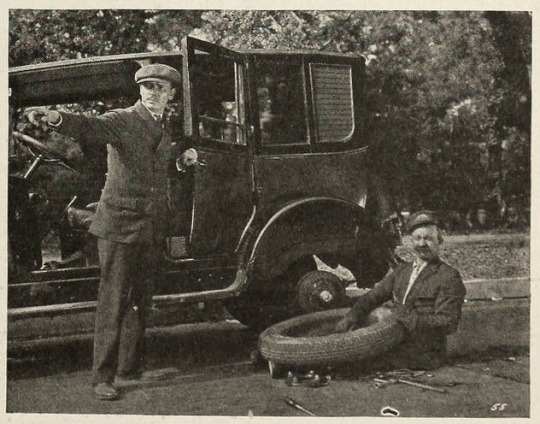
Taxicab snafu in A Thief in Paradise from Exhibitors Trade Review, 10 January 1925
---
Points of Interest:
Contemporary blurb that describes the under-the-sea dance sequence in more detail:
“By a combination of photography and set design, gigantic fish swim about among the coral trees and huge sea shells. Even the human participants in the under-sea dance make their entrance as divers swimming down from the surface to the immense shell on the ocean’s floor which serves as the hiding place of the stellar feminine dancer who is clad in a symbolic costume of pearls. “In order to enhance the brilliancy of the picture, the entire set, including coral, shells and floor of the sea, was finished in bright silver and the costumes of the dancers were made entirely of especially constructed luminous silver and gold cloth. Even the natural flicker of light and shadow which characterizes scenes actually filmed under water was reproduced by the technicians. “The marine dance tableau constitutes a play within a play in “A Thief in Paradise.” It is the entertainment provided by the host at a lavish engagement party given in honor of two of the principals and also has an important dramatic value in developing one of the many dramatic moments of the story.” - Moving Picture World, 10 January 1925
Based on some of the stills, I think it’s possible that Aileen Pringle may have had a double for this dance sequence, but no other dancers are credited. There is also no credit I could find for a choreographer.
The amount of pure spectacle packed into a mere seventy-one minutes is astounding to me! Knowing how skilled Frances Marion was as a scenarist, I don’t doubt that A Thief in Paradise managed to deliver plot just as well as it (according to contemporary reviews) delivered the spectacle. Film historians have been working for years to restore Marion’s rightful place as a crucial figure in American film history, so examples of her work being lost sting just that much more.
Despite the fact that A Thief in Paradise was a huge success and a top box-office draw of 1925, comparatively little digitized material exists online. Most notably absent are stills from the South Seas portion of the film.
This Ronald Colman fan website has some screenshots from the extant trailer as well as a digitized copy of a program from ATiP’s German release.
Hawaiian actress Etta Lee also appears in this film as Carmino’s maid. I ended up going down a bit of a rabbit hole reading about Lee and will probably end up doing a spin-off of this post about her career. You may recognize Lee from her roles in The Untameable (1923), The Toll of the Sea (1922), or The Thief of Baghdad (1924)
☕Appreciate my work? Buy me a coffee! ☕
---
Transcribed Sources & Annotations over on the WMM Blog!
#1920s#1925#Ronald Colman#Aileen Pringle#Doris Kenyon#Etta Lee#george fitzmaurice#silent cinema#silent film#lost film#classic movies#classicfilmblr#american film#Goldwyn#silent movies#film history#history
18 notes
·
View notes
Text
Silent bulletin: news for September 2024
Back to school time! Here’s a roundup of the silent movie news I really want to share with you as summer turns into autumn. Just think how many of these forthcoming delights you could enjoy for less than the cost of a dynamically priced Oasis ticket. Screenings and festivals I missed StummFilmTage Bonn this year again – both in person and online. But Paul Joyce and Paul Cuff both kept us up to…
#BFI#Caspar Salmon#Cinema&039;s First Nasty Women#Eureka#featured#haxan#hippfest#Hippodrome Festival#Hugo Max#Jane Gardner#Kennington Bioscope#Laurel and Hardy#London Film Festival#Louis Feuillade#Lupino Lane#Musidora#Neil Brand#Pandora&039;s Box#podcast#Pordenone#Pordenone Silent Film Festival#Sherlock Holmes#silent film#South West Silents#Stummfilmtage Bonn#Tristan Ettleman#Women FIlm Pioneers Project#women in film
0 notes
Text

Anything but Silent: Lobby Card for Swing
Last year, Special Collections and Archives at the University of Iowa Libraries acquired items to form a new collection: the Black Film and Television Collection. In honor of Black History Month, we’re shining a spotlight on a different item from this collection.
In last week’s installment, we took a closer look at the poster for 1919’s The Green-Eyed Monster. Now we’re picking up 20 years later, with the spotlight on a lobby card from Oscar Micheaux’s 1938 film Swing, part of the Black Film and Television Collection. Starring Cora Green, Swing is notable as an example of two overlapping genres: race film and musical film.
Like many of Micheaux’s films, Swing it is also a tale centered around Black characters with grand aspirations. And like Micheaux himself, these women are pioneers, willing to make a path through the unknown.
Swing is a story born of the Harlem Renaissance, which by 1938 was declining in the wake of the Great Depression. The movie follows Eloise Jackson (Hazel Diaz) and Mandy Jenkins (Cora Green), two young women from Birmingham, Alabama. Mandy catches her husband (Larry Seymour) having an affair with Eloise, and Eloise flees to start over as a singer in Harlem. Her past catches up with her, however, and through a series of mishaps, it ends up being Mandy who succeeds as a performer on Broadway.
Who was Oscar Micheaux?
Last week’s blog touched on the work of Micheaux, but it’s worth digging deeper into the life of this singular talent.
Micheaux was born in 1884 and grew up with his 12 siblings on a farm in a small town in Illinois. His parents had been born into slavery in Kentucky, but neither emancipation nor a move north could create distance from the realities of structural racism.
The debts Micheaux’s parents had undertaken to keep the farm afloat became more burdensome over time and had educational repercussions for their fifth-eldest child. For a while, they were able to send Oscar to a school in a neighboring town, but financial difficulties eventually forced them to bring him back to work on the farm. This adjustment was difficult for an intelligent, ambitious teen to process, and Micheaux rebelled. Frustrated, Oscar’s father sent him to his older brother in Chicago, where he took work as a porter.
During this stint in the city, Micheaux set his hopes on homesteading to the west. He saved the earnings from his job until he could buy farmland in South Dakota and worked this land for years, a Black man surrounded by a community of white homesteaders. His experience in South Dakota came to an end when a drought withered his crops and his first marriage began to deteriorate. Micheaux committed these experiences to the page, emerging in 1913 with an anonymous, self-published book titled The Conquest, and a new ambition: to make his living as a storyteller.
In 1918, Micheaux would turn much of the material from The Conquest into a new, more fictionalized project, a novel he would call The Homesteader (both books can be found in the UI Libraries Special Collections & Archives). It was this work that caught the eye of the Lincoln Film Company’s George Johnson, who contacted Micheaux and offered to adapt the novel. However, the two couldn’t agree on a direction for the project, and the deal was scrapped. It became clear to Micheaux that if he wanted narrative control over a film based on his story, he’d have to make it himself. And in 1919, the new, Sioux City-based Micheaux Book & Film Company released the silent film The Homesteader.
Swing came almost 20 years after The Homesteader. By the time it was released, Micheaux had made nearly forty movies, both silent films and “talkies.” His contributions had defined the art of the race film and brought the experiences of Black Americans to the screen. As one might expect given the climate of his day, Micheaux was no stranger to controversy and censorship; his stories confronted racism directly, in ways the white establishment found “political” and therefore threatening. As an independent filmmaker in a burgeoning studio system, Micheaux’s budget was often tightly constrained. In 1928, he had to declare bankruptcy, but he continued filmmaking afterward with the same tenacity that had led him to that parcel of land in South Dakota.
Micheaux only made four more films after this one, and by his death in 1951 he had declared bankruptcy again. But in recent years, his contributions to film history have received more attention. The Academy Museum of Motion Pictures features an exhibit on Micheaux’s work, and in 2010 the U.S. Postal Service released a stamp in his honor.
Swing and Cora Green
Since Swing was a musical film, it also gave Cora Green a new opportunity to showcase the singing voice that had already made her a star. Green performs two of Swing’s four musical numbers, “Bei Mir Bist di Schön” and “Heaven Help This Heart of Mine.”
Though she was only in two feature films (Swing in 1938 and Moon Over Harlem in 1939), her decades as a vaudeville performer had earned her the distinction of “the highest-paid colored woman in vaudeville,” according to one contemporary newspaper. She was popular enough that during World War II, she toured with the United Service Organizations (USO) to the Persian Gulf, performing for Black troops. Unfortunately, we don’t know what direction Green’s life took after the war, since she vanishes from the record in 1949.
What Green left behind was a limited but unique body of work, and this lobby card is a small piece of her story. In Swing, her voice carries to us through the years, the sound of a new art form just hitting its stride.
Next week, we’ll explore another distinct genre of Black filmmaking: the Blaxploitation film
---Natalee Dawson, Communication Coordinator at UIowa Libraries, with assistance from Liz Riordan, Anne Bassett, and Jerome Kirby
#black history#black history month#Swing#Cora Green#oscar micheaux#black film#film#black history matters#libraries#musical film
46 notes
·
View notes
Text





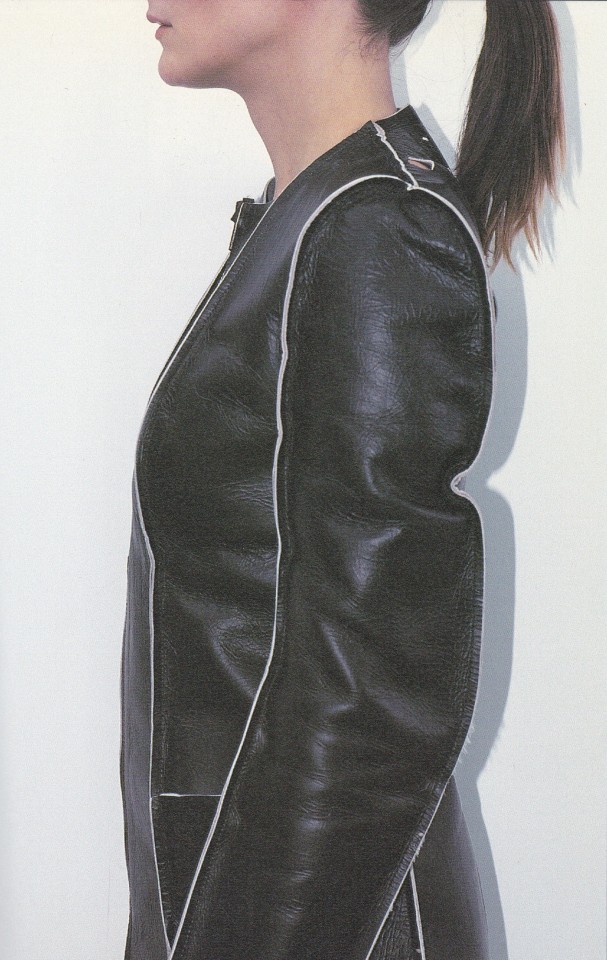
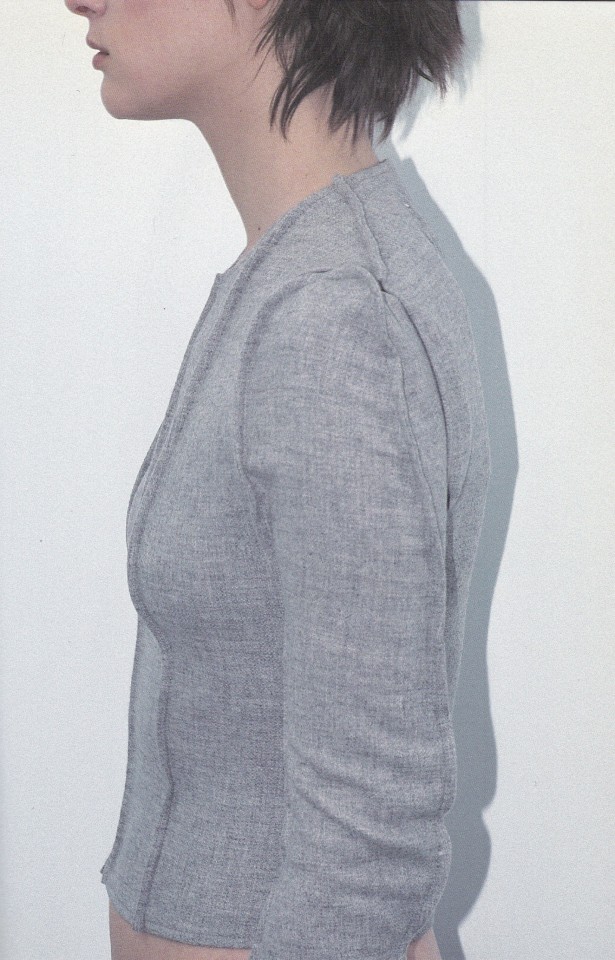





'2000-1' la maison martin margiela
collection martin margiela autumn winter 1998 1999
by mark borthwick
with thank to helen filliers yorinda gersina stella tennant
Grafiche Zanini, Bologna Septembre 1998, 110 pages, 16 x 24 cm, Softcover,ISBN 2-9512460-0-5
euro 220,00
email if you want to buy [email protected]
The presentation in Paris of Margiela's Autumn/Winter 1998/1999 collection featured collaborations with stylist Jane How, writer Sydney Rose, and Mark Borthwick who contributed a video featuring interactions between three women who are wearing items from the collection. This book contains photographs that were made during the production of the film.
Mark Borthwick has re-invigorated contemporary fashion photography, and successfully merged it with art, video and design. In this book, he has created a sparse and lyrically minimal document in which he freely interprets the Fall/Winter 1998/99 fashion collection of Martin Margiela -- whom Valerie Steele has called "one of the most important designers ever." Margiela's understated clothes are the perfect compliment to Borthwick's photographic sensibility, and this book represents yet another pioneering project for a photographer who has already worked with major designers, choreographers and magazines like I-D, Interview, Italian Vogue, and Purple Fashion.
24/05/23
orders to: [email protected]
ordini a: [email protected]
twitter: fashionbooksmilano
instagram: fashionbooksmilano, designbooksmilano tumblr: fashionbooksmilano, designbooksmilano
#Maison Martin Margiela#Mark Borthwick#fashion collection catalogue#Autumn Winyer 1998/99#very rare book#Jane How#Stella Tenant#fashion books#fashionbooksmilano
34 notes
·
View notes
Text
Human Rights Campaign Announces Eight New Members to its Boards of Directors
Sophia Bush, She/Her/Hers, Los Angeles
Sophia Bush is an actress, activist, producer, and entrepreneur. She has starred in television and film projects such as One Tree Hill, John Tucker Must Die, Chicago PD, Incredibles 2 and Good Sam.
Most recently, Bush wrapped production on Bryan Greenberg’s directorial debut, Junction and in London’s West End ‘2:22 – A Ghost Story’ play. She currently hosts her podcast, “Work in Progress with Sophia Bush” and co-hosts the iHeartRadio podcast “Drama Queens” alongside Hilarie Burton Morgan and Bethany Joy Lenz. Beyond entertainment, she's a dedicated activist and philanthropist who passionately supports projects empowering girls and women. Alongside her business partner Nia Linder Batts, Bush is a General Partner and investor in Union Heritage Ventures, a majority African American and women-owned capital firm. She also co-founded and sits on the board of I am a voter® and serves as a Strategic Advisor for First Women’s Bank with Billie Jean King.
Ashlyn Harris, She/Her/Hers, New York City
Ashlyn Harris, a former goalkeeper for the USWNT, Orlando Pride, and Gotham City FC in the NWSL, is a celebrated 2x World Cup Champion and Olympian. After retiring from the game, she served as the Global Creative Director of Gotham City FC. Beyond her athletic and creative achievements, Harris has established herself as a pioneer in advocating for social justice, particularly within the LGBTQ+ community, and in challenging stigmas around mental health. Her leadership and instrumental role as one of the plaintiffs in the groundbreaking case suing US Soccer for equal pay for women demonstrates her courage and unwavering dedication to fostering fairness and driving meaningful societal change. She now serves on the board of the Women's Sports Foundation, led by Billie Jean King, and passionately advocates for Title IX and closing the gender gap in women's sports.
In addition to growing Gotham FC to a 5x valuation as their creative director, she now works as a creative consultant and producer, collaborating with brands like Hello Sunshine and ALLY Bank. Her business acumen and passion for advocacy continue to guide her, positioning her as both a leader and a catalyst for progress. In her personal life, Harris finds joy and fulfillment in her family. She welcomed her daughter Sloane, in February 2021 and her son Ocean, in July 2022.
6 notes
·
View notes
Text
The Everlasting Influence of #MeToo: From Online Hashtag to Real-World Change
Introduction:
Social media movements, the phenomena that are redefining contemporary activism, find their roots not in the digital world but in the lived experiences of individuals. They originate in the offline spaces, the daily lives of ordinary people who are driven by the need to stand up for what is just and right. These movements are deeply entwined with social and political activism and serve as platforms for the disenfranchised and marginalized to have a voice.

However, the trajectory of social media movements, as impactful as they may seem in the digital realm, often faces criticisms of "clicktivism" and "slacktivism." These terms reflect the concern that online participation might lack real-world impact. To truly understand the influence of social media movements, it's essential to recognize the synergy between online and offline spaces, where the most successful movements thrive and endure.
youtube
youtube
The #MeToo Movement: A Case Study:
A prominent example of a social media movement that has transcended both online and offline spaces is the #MeToo movement. It is a testament to the fact that these movements do not begin with hashtags but with the earnest efforts of individuals who strive to bring about change. The #MeToo movement originated in 2006, created by social activist Tarana Burke. Burke's vision was to create a movement that empowers survivors of sexual violence, particularly young women of color in underprivileged communities. She coined the phrase "Me Too" to symbolize empowerment through empathy, laying the foundation for a movement against sexual abuse.
The movement remained largely under the radar for over a decade until 2017, when actress Alyssa Milano shared her personal experience of sexual abuse on Twitter using the hashtag #MeToo. Her call to action resonated with countless others, encouraging them to share their own stories. The hashtag quickly spread across Twitter, being used 1.7 million times in 85 countries. It received support from numerous female celebrities who echoed the message of "Me Too."
The Symbiosis of Online and Offline Spaces:
While the #MeToo movement gained immense traction online and earned recognition as a global digital campaign, its impact was not confined to the digital sphere. It transcended into the physical world, sparking campaigns against sexual violence across various industries, including film, music, politics, education, sports, military, and medicine. The movement prompted legislative and legal actions, such as the Me Too Congress Act, and led to convictions of rapists and sexual abusers, especially those who held positions of significant power in society. One of the most notable outcomes was the conviction and downfall of Harvey Weinstein, a former film producer who had enjoyed a position of authority. The #MeToo movement mobilized diverse groups, including celebrities, activists, survivors of sexual abuse, and everyday citizens. It spanned multiple spaces and platforms, from social media to workplaces, red carpet events, and courtrooms. The movement leveraged social media for awareness, and this digital presence spurred real-world efforts against sexual violence.

Conclusion:
Social media movements are not born with hashtags but with the dedication of individuals determined to champion social justice. The #MeToo movement exemplifies how social media can amplify voices that have been silenced and ignored, providing survivors of sexual violence with the power to share their stories. While hashtags are crucial for mobilizing these movements online, it's essential to acknowledge the pioneering work of activists like Tarana Burke, who laid the groundwork long before hashtags began trending. Social media movements thrive when they bridge the gap between digital and physical spaces, forging lasting change in an increasingly connected world.
The #MeToo movement illustrates that social media movements are more than mere hashtags; they are driven by individuals committed to societal change. This movement, initiated by Tarana Burke in 2006, showcases how real-world impact transcends the digital realm. By sparking campaigns against sexual violence, inspiring legislative changes, and leading to high-profile convictions, it demonstrates the tangible influence of social media movements. Their continued relevance underlines the significance of bridging the gap between online and offline spaces. Social media movements amplify silenced voices and exemplify that true change begins with dedicated individuals.

References:
Hashtag Activism. (2012). Margaret Rouse. Retrieved October 28, 2023, from https://www.techopedia.com/definition/29047/hashtag-activism
Goswami, M. P. (2018). Social media and hashtag activism. ResearchGate. https://www.researchgate.net/publication/326655352_Social_Media_and_Hashtag_Activism,viewed on 28 Oct 2023
alignmedia. (2023, March 16). More than a Hashtag: The #MeToo Movement is 10 years in the Making - ALiGN: Alternative Global Network Media Lab. ALiGN: Alternative Global Network Media Lab. https://carleton.ca/align/2023/more-than-a-hashtag-the-metoo-movement-is-10-years-in-the-making/,viewed on 28 Oct 2023
Burke, T. (2022, October 12). Tarana Burke: What “Me Too” made possible. Time. https://time.com/6221110/tarana-burke-me-too-anniversary/,viewed on 28 Oct 2023.
Jeff Grabmeier. (2023, August 8). Why #MeToo remains a rallying cry for sexual abuse survivors. OHIO STATE NEWS. Retrieved October 28, 2023, from https://news.osu.edu/why-metoo-remains-a-rallying-cry-for-sexual-abuse-survivors/
Rosa, J. (2019, October 16). Alyssa Milano on sharing alleged sexual assault story 25 years later. ABC News. https://abcnews.go.com/Entertainment/alyssa-milano-sharing-alleged-sexual-assault-story-25/story?id=66317784,viewed on 28 Oct 2023
TEDx Talks. (2021, May 1). Can a “Like” change the world? The power of clicktivism | Jenk Oz | TEDxYouth@Engomi [Video]. YouTube. https://www.youtube.com/watch?v=evvv45BAYvc,viewed on 28 Oct 2023
TEDx Talks. (2018, November 12). Slacktivism: Social Media’s Effect on Activism | Sophie Egar | TEDxYouth@PepperPike [Video]. YouTube. https://www.youtube.com/watch?v=dhPIgES_hws,viewed on 28 Oct 2023
Giphy. (n.d.). GIPHY - Be animated. GIPHY. https://giphy.com/,viewed on 28 Oct 2023
7 notes
·
View notes
Text
From the Wikipedia page for Ex Machina:
In Science Fiction Film and Television, reviewer Nick Jones says that while the definition of a Turing test given by Caleb—"It's where a human interacts with a computer. And if the human can't tell they're interacting with a computer, the test is passed"—is consistent with the modern popular understanding of how we define true AI, Ex Machina is depicting a test closer to Alan Turing's original proposal, in which the machine passes if it can convince a human it is not just human, but specifically female. Jones says what the film means is that today's digital culture "equates women with machines". Nathan tells Caleb that Ava's face is a composite based on Caleb's pornography preferences gathered while routinely spying on him, and the first practical use Nathan makes of his pioneering human-like machines is to exploit them sexually. Jones contrasts Ex Machina's pessimistic suggestion that AI and robots lead directly to the objectification and sexualization of female (by design) gendered servants of and for emotionally stunted men with the far healthier and compassionate, but still gendered, relationship depicted in Spike Jonze's Her (2013). Jones says we are shown "Ava's whispered unheard words to Kyoko before they murder Nathan" because Ex Machina "asks us imagine what our abused, exploited devices might do if they could start talking amongst themselves." The audience's sympathy for Caleb has been dwindling, and then he "gets his comeuppance", swapping roles with Ava, he now the prisoner and she the free agent offering him no more help than he did Kyoko. [Jones, Nick (2016). "Ex Machina". Science Fiction Film and Television. Liverpool University Press. 9 (2): 299–303. Retrieved 25 November 2022 – via Project MUSE.]
The article in question seems interesting.
EDIT: found the article! Direct quotes:
While Ex Machina may hint at the utopianism of global technological communication – its ability to foster cooperation and enrich communal ways of being – it admits in its third act that this is not quite how the Internet is used on a daily basis. Nathan may be working towards artificial intelligence, but he’s also making sex toys: Ava is the latest in a long line of robotic slaves he’s built and imprisoned. The preceding model, mute housemaid Kyoko (Sonoyo Mizuno), pleasures Nathan on command, while other half-built prototypes fill mirrored cupboards in his bedroom, like Bluebeard’s dead wives (or, perhaps more pertinently, like the pieces of female anatomy American Psycho’s Patrick Bateman keeps around the house). This aspect of the film has opened Ex Machina up to feminist critique, depicting as it does the literal objectification of women and equating them with unfathomable artificial beings. However, while any treatise on the creation of artificial life marginalises women – fictions from Frankenstein to Jurassic Park (Spielberg US 1993) simultaneously make procreation a scientific, male pursuit and revel in the apparent dangers of such hubris – Ex Machina explores what might happen to gender relations under such conditions, and indeed what has happened to objectification in an era of cyberculture. The robots here are purely recreational: they cannot bear children, and Ava’s predecessor cannot even speak. Nathan even eventually reveals that he designed Ava’s face based specifically on the kind of Internet pornography Caleb himself watches (‘Hey, if a search engine’s good for anything, right?’ Nathan chuckles). In this way the film admits the misogyny of existing digital culture and extrapolates a chilling vision of emotionally stunted males who need not worry about relating to others since they can always find solace in their computers. Though it equates women with machines (as, in fact, did Alan Turing’s original test), Ex Machina does so in order to critique this equation and how it has been fostered by the masculine culture Nathan and Caleb represent. This, then, is a darker, more pessimistic vision of human–synthetic relationships than Spike Jonze’s mellow Her (US 2013). In its story of the burgeoning love between a divorcé and a sultry-voiced operating system Samantha (Scarlett Johansson), that film presented an ultimately familiar relationship, albeit one with an unorthodox participant. For all the references to Samantha’s immense intelligence, Her envisions the arrival of technological singularity – the point at which machines outrace our capacity to control or understand them, and beyond which pretty much anything is possible – as melancholic but benign: the tool says a compassionate farewell to the hand that formerly grasped it and absconds with hundreds of other tools to an immaterial realm of quantum possibility. Not so in Ex Machina. Ava’s whispered, unheard words to Kyoko before they murder Nathan ask us to imagine what our abused, exploited devices might do if they could start talking amongst themselves. Even our ostensible hero gets his comeuppance, Caleb rudely discovering that Ava was only leading him on so that she could secure her escape. Imprisoned in Nathan’s house at the film’s twist end, Caleb swaps roles with Ava, yet we do not feel much sympathy. Just because he convinced himself that Ava has a soul doesn’t mean his desire to have her for himself was any less base than Nathan’s.
If in Ex Machina’s last moments Ava appropriates traditional emblems of femininity (long hair, a white dress, immaculate skin), at least she does so on her own terms after savagely marginalising the two bullying men in her life. The film’s consistent visual contrast of the coldly artificial and the organically natural – exemplified in the architecture of Nathan’s house and an early close-up of a knife slicing through salmon – remains unresolved. We are acutely aware that Ava is still a machine, and moreover one capable of fierce self-defence. Her escape into the world should prompt us to ask ourselves whether there might already be Avas in our midst, and if so whether they will ever forgive us for how we have treated them.
I also made a Letterboxd list with all of the films mentioned in the review.
2 notes
·
View notes